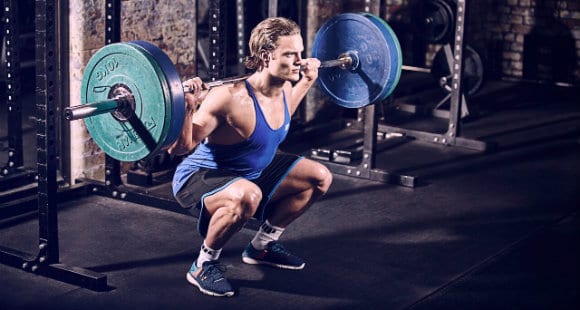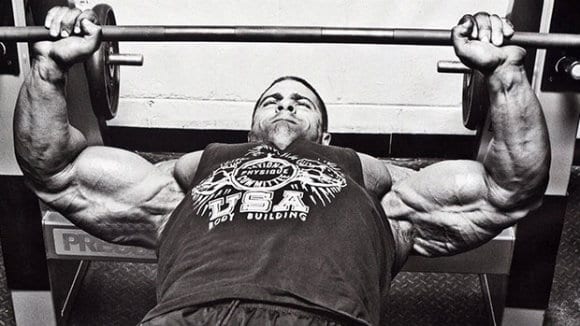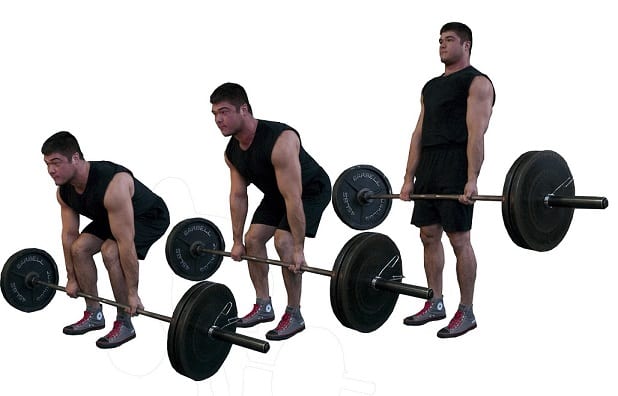Powerlifting: What is it?
Powerlifting is that sport that is based on three fundamental lifts: Squat, Bench Press and Deadlift (both conventional and sumo variant).
Born from an offshoot of Olympic weightlifting, it found its international consecration in the 70s, when the first Powerlifting competitions were held, thus sanctioning its definitive independence from weightlifting (which today focuses on two different lifts: the snatch and the momentum).
Regole
Before dealing with the competition movements, it seems appropriate to mention the rules: in most competitions, athletes are divided according to gender, weight and age, in order to avoid imbalances that could distort competition.
A further distinction also concerns the competition modality: with equipment (so-called "Powerlifting Geared") and without equipment (so-called "Powerlifting Raw"): in the first case, athletes will be able to use bodices, jerseys, bands and belts to support the lifts, while in the second case, the athletes can only use belts and bands.
How is it practiced?
As previously stated, the 3 lifts of Powerlifting are Squat, Bench Press and Deadlift, which must be performed in accordance with the regulations approved by the Federation in which you compete.
Although there are numerous Federations, the lowest common denominator certainly concerns the validity of the lifts, which must have the following peculiarities (reference is made exclusively to the movement, deliberately omitting the part relating to the "race commands").
# 1 Squat
Defined as the "King of exercises", it is the exercise that involves the complete squat. It must be a "deep" squat, or "below parallel", ie one such that the hip is below the knee line.

# 2 Flat bench
Always a "must" in the workout routines of anyone who frequent or have attended a gym, it is one of the best builders of lean mass for the upper body. The barbell must be brought to the breastbone and, after a brief stop at the chest of about one second, the stretch can be completed.

# 3 Deadlift
Also known as the "Deadlift", of the three lifts it is perhaps the most intuitive to understand. It consists of lifting the barbell off the ground, fully extending the legs and bringing the torso to an upright position.
Abandoning the part relating to the technicalities of the competition, it seems appropriate now to move on to the second part of the discussion, that is the one relating to training in the gym and the practical utility of the large multi-joint exercises indicated above.

Powerbuilding
Well, in the last few years I have found an increasing interest, on the part of enthusiasts, in Powerlifting style training, that is a training that, although not aimed at competing, is still based on the three main lifts, flanked by some complementary exercises, having a specific function (eg recovery, pumping, refinement of a critical point of one of the fundamental lifts).
Thus a new training style was born, which Internet users have defined as "Powerbuilding", or training that aims to build the body by increasing strength.

The concept behind this style can be summarized with the following example (which represents the “stall” condition typical of many amateurs).
Tizio is 190 cm tall by 90 kg, and for 1 year he has been stuck with a stunted ceiling on the flat bench equal to 100 kg (of the "slow" ones, in which the weight remains suspended for 2 to 5 seconds and ugly to look at, in which the subject writhes under the weight, lifts his feet off the ground and performs inhuman screams). Even on presses with 30 ° dumbbells it is firm with the load. By now he has tried them all: stripping, pre-tiring, super-set, tri-set, but the loads just don't want to improve.
One day, however, Tizio has an enlightenment, and thinks that maybe he is doing something wrong: pushing to death every repetition of each series is perhaps too heavy a stress for his organism, which obviously does not allow him to improve excessively. So Tizio decides to draw up a training plan which, in the long run, alternating intensity and volume, performing the same movement several times a week, will lead him to perform 1 repetition with 105 kg, and then 2 repetitions with 100 kg, having, however, full control of the movement and a correct and disciplined form of execution. At the same time, Tizio therefore also begins to read up on the correct execution of the exercises, the correct neuro-muscular activation under load and the precautions to be taken to train in complete safety, also consulting qualified and competent personnel.
The example above contains all the cornerstones of strength training:
? multifrequency: or repeat the lift several times a week, alternating the volume and intensity; in other words, as the volume increases, the load used decreases, and vice versa (eg Monday: 5sx5r flat bench with 65kg; Friday 8sx3r with 75 kg). The rationale of this method is as simple as it is effective: those who practice an exercise several times a week will necessarily improve more than those who do it only once a week (do you remember as a child when you had to learn the 7 times table? had to repeat it every day !?);
? correct movement: as to be able to handle large loads, it is necessary to acquire maximum awareness of the gesture, which can only be achieved by exercising several times a week, and with a good total volume;
? determined weekly tonnage: taking up the previous example, in fact by doing a 5 × 5 on Monday with 65kg and an 8 × 3 on Friday with 75kg, you will have lifted the beauty of 3425 kg of flat bench only, complementaries excluded;
? neuromuscular activation: that is, learning to recruit the instrumental and necessary musculature for lifting, making sure that all the muscles used in the lifting "row" all in one direction (have you ever tried to think that the lats can play an active role in stretching on bench?).
Benefits of Powerlifting
And we come to the last part of the article, the one relating to benefits.
Well, all the elements listed above will contribute to the increase in strength, which, in turn, it will also heavily affect the muscle adaptation of your body, inducing him to grow, of course if the training has been combined with a correct high-calorie food plan (yeah, you read that right: I wrote CRESCERE!).
Integration
 With regard to supplementation, numerous scientific evidences have confirmed that a substantial increase in performance was found in strength training following the use of Creatine (in whatever form it is taken): creatine, in fact, if taken chronically (about 3-5 g / day), saturates the muscle stores of creatine phosphate, guaranteeing better anaerobic performance, and therefore greater loads.
With regard to supplementation, numerous scientific evidences have confirmed that a substantial increase in performance was found in strength training following the use of Creatine (in whatever form it is taken): creatine, in fact, if taken chronically (about 3-5 g / day), saturates the muscle stores of creatine phosphate, guaranteeing better anaerobic performance, and therefore greater loads.
Conclusions
This article was written with the aim of clarifying, in broad terms, what Powerlifting is, how you can train in the Powerlifting style, and what benefits to derive from it. In future articles, we will certainly look at some training programs focused on strength. Good workout!


























